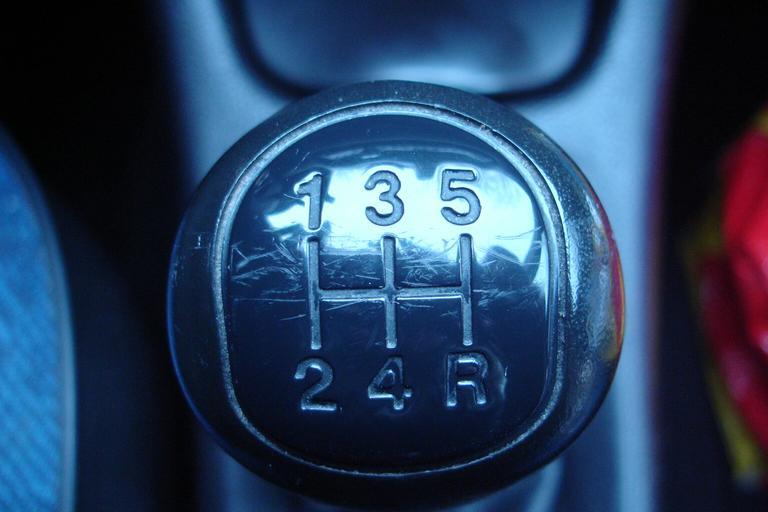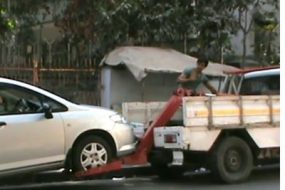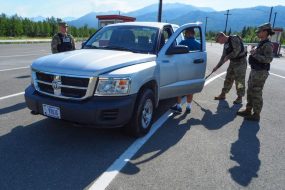
Did you just moved to a house on a hill and have been having troubles parking your car in front of the house, on the hill, as you have witnessed cars roll away after being packed, as a result of the steepness of the road, and so you park far away from your house because you can’t take the risk of parking on the hill with your manual transmission vehicle.
So, now you are wondering, how can you park your manual transmitter vehicle on the hill properly, without it tumbling, thereby resulting in an accident or damages to your car?
When you park a vehicle with a manual transmission on a hill you should ensure you park the car in a way that your wheels are parallel to the curb and turn the tires towards the curb, slip your car into the neutral mode, and pull the handbrake.
Can You Park a Manual Transmission Vehicle on a Hill?
Yes, you can park manual transmission vehicles on a hill. Manual transmission vehicles, unlike automatic transmission vehicles, do not have parking gear, so you have to navigate driving manually. Hence, it takes a level of technical knowledge to park such a car properly, talk less of parking it on a hill.
Parking on a hill can either refer to parking the car uphill or downhill. Either way, a manual transmission vehicle can park up or down a hill, with the necessary expertise.
Although compared to the automatic transmission, it might be a little difficult and tasking, it might even be a little bit riskier, but it can be done. You can certainly park a manual transmission vehicle on a hill.
Things to Do When You Park a Manual Transmission Vehicle on a Hill
To successfully park a manual transmission on a hill to avoid the dangers that accompany parking on a hill, there are several safety measures you must take, and various things to do to park your manual vehicle.
Not doing these things and simply taking your chances will prove very hazardous at the end of the day. That is, it might cause an unpleasant situation such as an accident, or your car tumbling down the hill without control.
Here are things you should do when parking your manual transmission vehicle on a hill:
1. Car Wheels to the Curb
You must ensure that you park your car in a way that your wheels are parallel to the curb. This means that your wheels must be squarely facing the curb, especially when your car is facing downhill.
Here, what is important are the front tires of your car. Make sure they are slightly touching the curb, making the tire by the passenger’s seat about six inches or less away from the curb.
Also, the amount of space you have in front or at the back of your car depends on whether you are parking uphill or downhill.
If you are parking downhill, ensure to leave the amount of space that can contain another car right in front of your car, and if your car is on an uphill slope, let the same amount of space be behind your car.
If you don’t take note of this, your wheels might not have the ability to get into the parking position, and if you manage to park, you might not be able to drive out when it is time to leave.
2. Uphill and Downhill Tire Movement
Now you have moved your car wheels parallel to the curb. The next thing to do is turn the tires – your front tires being the focus – towards the curb.
Whenever you are on a hill and you want to park, always think about the curb and your tire. They must have a relationship. The kind of relationship they have now depends on whether you are on an uphill slope or a downhill inclination.
If you are parking uphill, your tires must face away from the curb. This means that the part of your car’s front tire that will be in contact with the curb is the back of the tire. Your tire must be facing away as if you are trying to reverse on the curb.
However, the opposite should be the case if you are parking downhill. Your front tire must be twisted towards the curb as if you want to climb onto the curb. Your tire will slightly climb a few millimeters upon the curb.
3. Engage the Brakes
Once you have made the proper contact with the curb, you engage the brake by pressing your foot on it. Once you press the brake with your foot, slip your car into the neutral mode, and then wheel the steering wheel of your car a huge leap, or a full turn in the direction of your front tires.
While doing this, ensure that the engine is still powered so you don’t engage in dry-steering that might make your engines contract and put a strain on your tires and your steering wheel.
4. Enter the Curb
Once your car is on neutral and you have your foot on the brake, get set to enter the curb. To enter or drive a little bit into the curb, let go of your brake and let the car roll slowly – if your car is on a downhill slope – until your tire is firmly gripping the curb.
Ensure you take notice of the road, whether other cars are coming behind you so you don’t hit them. Make use of your mirrors to make sure. Once this is confirmed, and your tire is touching the curb, bring the car to a stop, turning off the engine.
5. Pull the Handbrake
Remember that you are using a manual transmission car, so you engage the handbrake by pulling it into place. Also, you should change the gear, putting it on either first gear, or reverse gear.
Again, the slope of the road determines the gear you should change to. If you are on an upward slope, it should be on first gear, but if you are parking downhill, ensure to put it on reverse gear.
This way, you will keep your car from rolling down the road because all that you have done properly arranges the transmission of your car in the opposite direction your car would have rolled to.
Manually setting your car transmission in the opposite direction of the road slope leaves no room for your car to roll down. However, while parking your vehicle on a hill, ensure not to park on a crosswalk as it is illegal to park on a crosswalk.
Advantages of Manual Transmission Gear
Some of the advantages of manual transmission vehicles include:
They Cost Less
Manual transmission vehicles cost lesser than their automatic counterpart. This is because the manual transmission gear has fewer moving parts than the automatic, and it involves fewer locomotive engines.
Now you know which car to buy if you are looking to cut costs and spend less.
However, it is important to note that in some countries, manual transmission cars cost more than automatic. So, the cost depends on the market. The transmission is valued in such a market.
Ensures More Driving Concentration
When you are driving a manual transmission gear, you have no choice but to give your driving full focus as all parts of your body are working together to move the vehicle.
Both your legs and hands are fully functional, responsible for driving the manual car. You can’t have enough attention to spare on your mobile phone while driving, as both of your hands are working; one on the steering wheel, and one on the manual gear (stick) occasionally.
Superior Gas Mileage
With the manual transmission gear, you have complete control over your car, so, you can decide and control the number of messages your engine is receiving. Invariably, you can burn less fuel, since you can control how much, or how intensely your engine is working.
Final Thoughts
When you want to park on a hill, always note the curb. The curb is what holds your car, ensuring that it doesn’t slip away. The curb is the edge of the road, the raised part of the road that slips the road into the sidewalk. Also, note that the relationship between your car and the curb depends on the slope of the road; whether you are going downhill or uphill.









